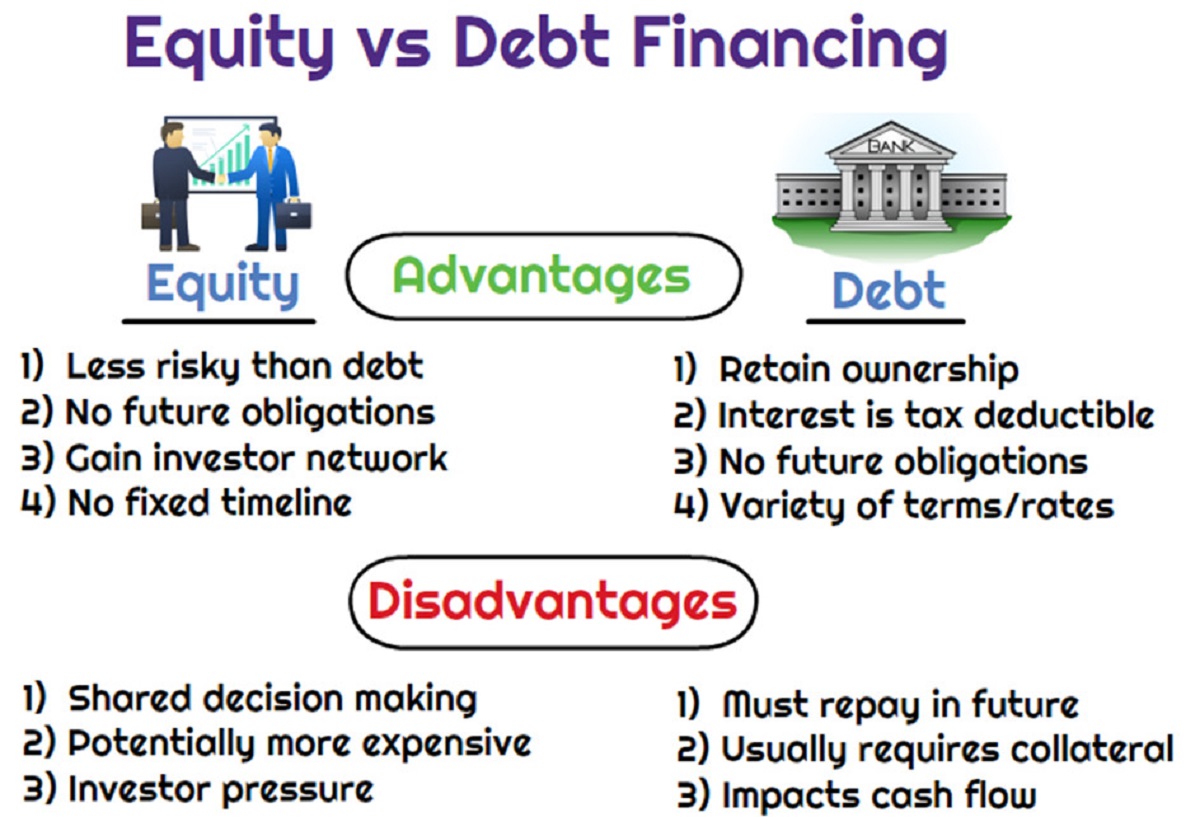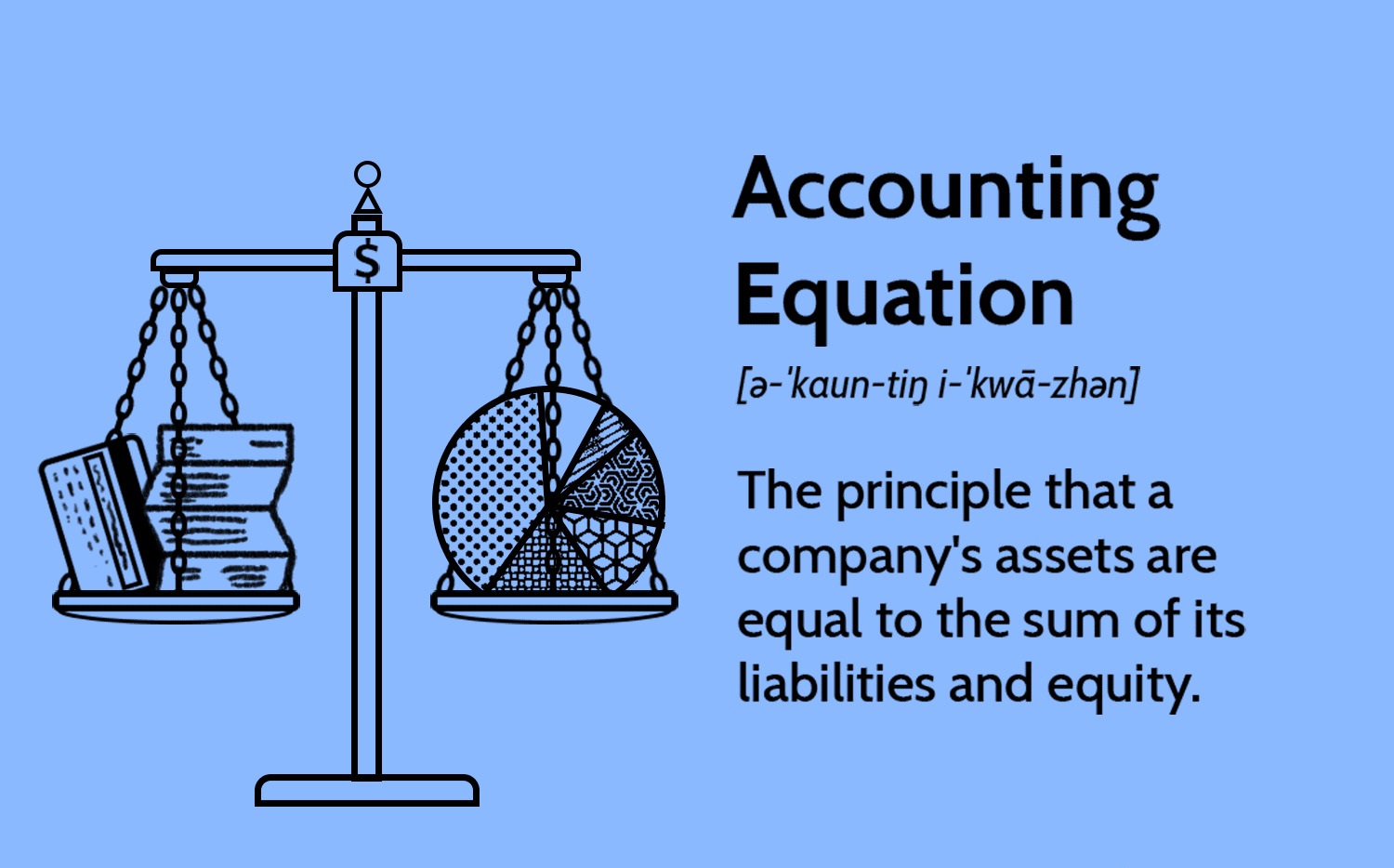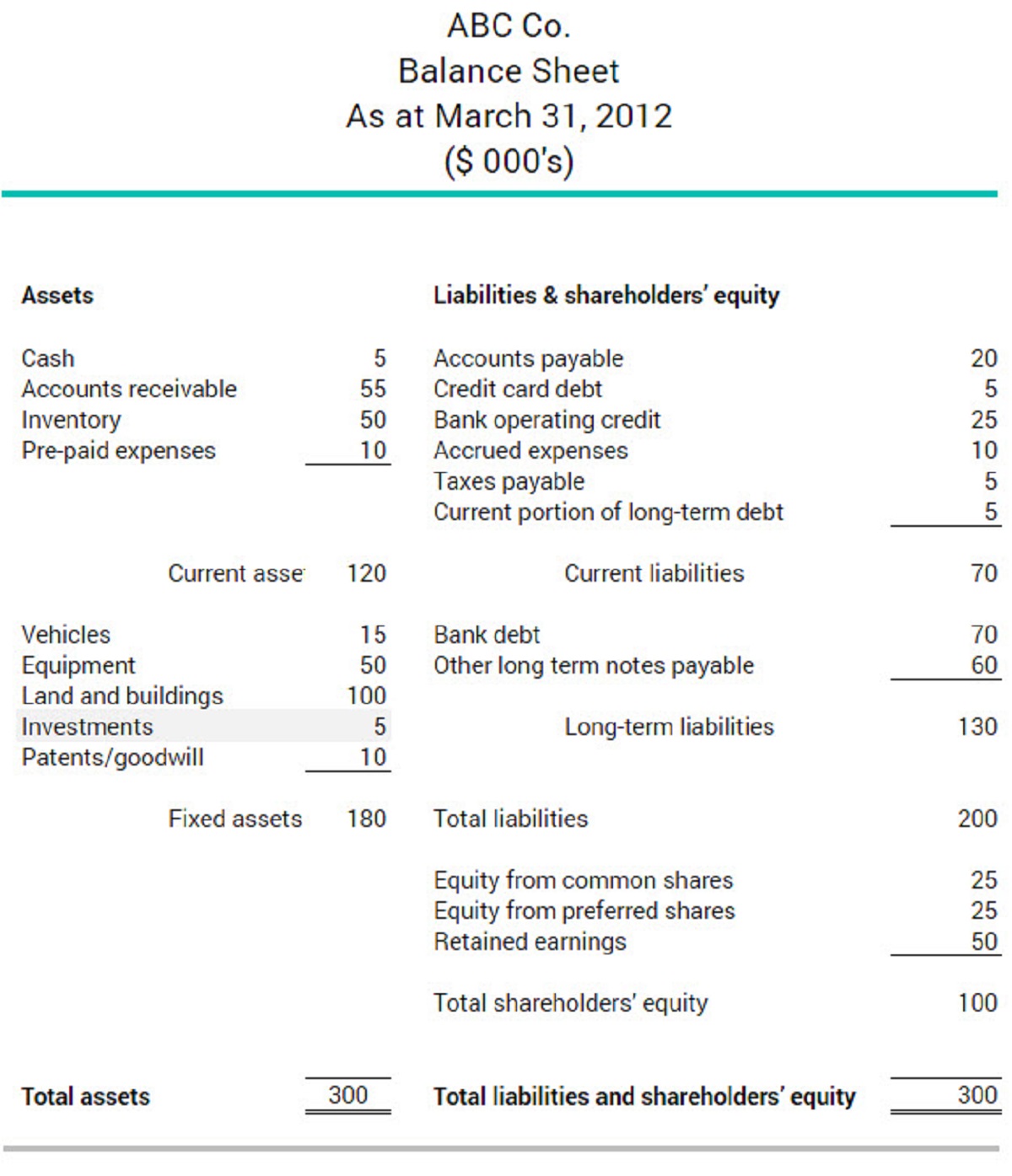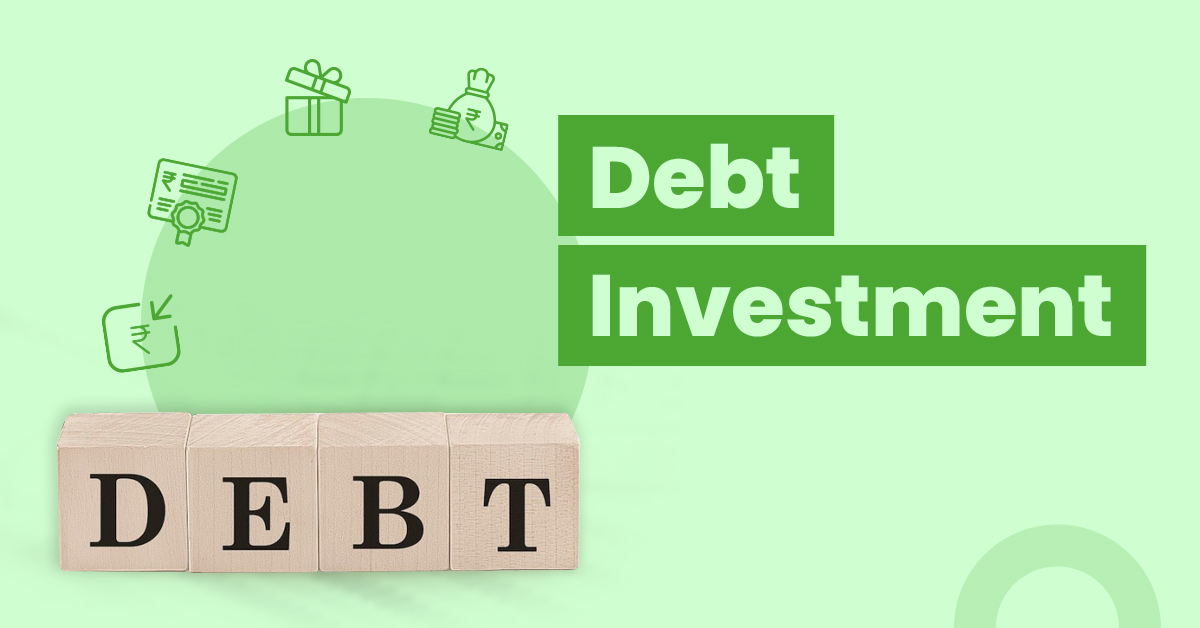Debt Investments
Debt investments refer to the financing of an organization or project through the issuance of debt securities, such as bonds or loans. In this type of investment, individuals or institutions lend money to the borrower in exchange for regular interest payments and the return of the principal amount at maturity.
Debt investments are considered a less risky option compared to equity investments, as they provide a fixed income stream and a defined time period for repayment. This makes them an attractive choice for investors looking for stability and a predictable return on their investment.
When investing in debt, investors become creditors of the borrower and have a legal claim on the assets of the company in case of default. This gives debt investors a priority position when it comes to repayment, making them more likely to recover their investment in case of bankruptcy or liquidation.
One of the key advantages of debt investments is the regular interest payments. As a lender, investors receive interest on their investment at a predetermined rate and frequency. This steady income stream can be particularly appealing to investors seeking a stable source of cash flow.
However, debt investments also have their downsides. One major disadvantage is the limited potential for capital appreciation. Unlike equity investments, where investors can benefit from the growth of the company and increase in share prices, debt investors have a fixed return and do not directly benefit from the success of the business.
Furthermore, the risk of default is always present with debt investments. If the borrower is unable to make the required interest or principal payments, investors may face a loss of their investment. Therefore, it is important for investors to assess the creditworthiness of the borrower and consider the risk-reward trade-off before investing in debt securities.
In summary, debt investments involve lending money to an organization or project in exchange for regular interest payments and the return of the principal amount at maturity. They offer stability, predictable returns, and priority in case of default. However, they lack the potential for capital appreciation and carry the risk of default. Understanding the key characteristics and risks associated with debt investments is crucial for investors to make informed decisions in their investment portfolios.
Equity Investments
Equity investments refer to the ownership of shares or stocks in a company. When individuals or institutions invest in equity, they become shareholders and hold a claim on the company’s assets and earnings. Equity investors have the potential to participate in the company’s growth and profitability and can benefit from capital appreciation.
One of the main differences between equity investments and debt investments is the ownership aspect. Unlike debt investors who are lenders to the company, equity investors are partial owners of the business. This ownership entitles them to certain rights, such as voting rights in major company decisions and the ability to receive dividends.
Equity investments offer higher potential returns compared to debt investments. As owners, equity investors have the opportunity to benefit from the growth and success of the company. If the company performs well, the value of the shares can increase, resulting in capital gains for the investors.
However, equity investments also come with higher risks. Unlike debt holders, equity investors are at a lower priority level in terms of repayment in case of bankruptcy or liquidation. If the company fails, equity investors may not receive their full investment back.
Another characteristic of equity investments is the participation in the company’s profits. When a company earns profits, it can distribute a portion of these profits to the shareholders in the form of dividends. These dividends can provide a regular income stream for equity investors, but the amount and frequency of dividends are determined by the company’s performance and management decisions.
Equity investments also offer the potential for additional benefits, such as control and decision-making power. Major shareholders can influence the company’s direction and strategy through voting rights and participation in shareholder meetings. This level of control can allow investors to shape the future of the company and have a say in important corporate decisions.
Liquidity is another factor to consider in equity investments. Unlike debt investments, which have a fixed maturity date, equity investments offer more flexibility. Shares can be bought and sold on stock exchanges, providing investors with the ability to convert their investment to cash relatively quickly.
In summary, equity investments involve owning shares in a company, providing potential for capital appreciation, participation in the company’s profits, and control over decision-making. They offer higher potential returns compared to debt investments but also come with higher risks and lower priority in case of bankruptcy. Understanding the unique characteristics and risks of equity investments is crucial for investors looking to diversify their portfolios and achieve long-term growth.
Definition
Debt and equity investments are two different approaches to financing and investing in businesses or projects. Understanding the definitions of these terms is essential for investors to make informed decisions about where to allocate their capital.
Debt Investments: Debt investments involve lending money to an organization or project in exchange for regular interest payments and the return of the principal amount at maturity. Debt investors essentially become creditors of the borrower, holding a legal claim on the assets of the company. They have a fixed income stream and a defined time period for repayment, making them a less risky option compared to equity investments.
Equity Investments: Equity investments, on the other hand, refer to the ownership of shares or stocks in a company. When individuals or institutions invest in equity, they become partial owners of the business and hold a claim on the company’s assets and earnings. Equity investors have the potential to participate in the company’s growth and profitability, and they may benefit from capital appreciation if the value of the shares increases over time.
The key distinction between debt investments and equity investments lies in the ownership structure and the financial relationship between the investor and the entity being invested in. Debt investors are lenders to the company, while equity investors are owners. Debt investors have a more predictable income stream in the form of interest payments, while equity investors have the potential for higher returns through capital appreciation and the receipt of dividends.
Both debt and equity investments have their own unique characteristics, risks, and rewards. Debt investments offer stability, regular income, and a defined repayment schedule. They are typically less volatile but lack the potential for significant capital gains. Equity investments, on the other hand, offer higher potential returns, the ability to participate in company growth, and potential control over decision-making. However, they come with greater risk and volatility, and equity investors are the last in line to be repaid in the event of bankruptcy.
It is important for investors to carefully assess their investment goals, risk tolerance, and the specific characteristics of debt and equity investments before making investment decisions. Diversifying one’s investment portfolio with a mix of both debt and equity investments can help to balance risk and return, taking advantage of the different benefits each type of investment offers.
Ownership
Ownership is a crucial aspect that distinguishes debt and equity investments. Understanding the differences in ownership structure is important for investors to assess their rights and responsibilities when investing in either debt or equity securities.
Debt Investments: In debt investments, investors act as lenders to the organization or project. By providing financing through bonds or loans, investors become creditors and have a legal claim on the assets of the company. However, this ownership is limited to the debt instrument itself, and investors do not have any direct control or ownership stake in the business. Debt investors have priority in terms of repayment, as they need to be repaid before equity investors in case of default or liquidation.
Equity Investments: Equity investments involve purchasing shares or stocks of a company, which grants investors ownership rights in the business. As equity holders, investors have a claim on the assets, earnings, and future profits of the company. They are considered partial owners and have the potential to benefit from the company’s growth and success. Equity investors may also have voting rights and the ability to participate in major decision-making processes, such as electing board members or approving corporate actions. The amount of ownership and corresponding rights will depend on the number of shares owned and the structure of the company’s share ownership.
The key difference in ownership between debt and equity investments lies in the level of control and influence that investors have over the organization. Debt investors have a financial stake but limited control, while equity investors have both a financial and ownership stake, which grants them greater influence in shaping the company’s direction and strategy.
It is important for investors to recognize the implications of ownership when considering which investment option to pursue. Debt investments can offer a more passive ownership approach, where investors have a structured repayment plan and a stable income stream. On the other hand, equity investments provide active ownership, giving investors the opportunity to actively participate in the company’s decision-making processes and potentially benefit from the company’s growth and success.
Ultimately, the choice between debt and equity investments depends on an investor’s goals, risk appetite, and desired level of involvement. Some investors may prefer the stability and fixed income of debt investments, while others may seek the potential for higher returns and active involvement offered by equity investments. Diversifying one’s portfolio with a combination of both debt and equity investments can help achieve a balanced approach to ownership and risk management.
Risk and Return
Risk and return are fundamental concepts in investing that investors must consider when deciding between debt and equity investments. Understanding the trade-off between risk and potential reward is crucial in making informed investment decisions.
Debt Investments: Debt investments are generally considered less risky compared to equity investments. When investing in debt, investors have a higher level of certainty regarding the return on their investment. Debt securities typically offer fixed interest payments at agreed-upon intervals, providing a steady income stream for investors. The repayment of the principal amount is also specified, offering additional predictability.
However, debt investments are not risk-free. The main risk with debt investments is the potential for default by the borrower. If the borrower is unable to make the required interest or principal payments, investors may face a loss of their investment. Therefore, assessing the creditworthiness and financial stability of the borrower is crucial when considering debt investments.
Equity Investments: Equity investments come with a higher level of risk compared to debt investments. As partial owners of the company, equity investors are exposed to the performance and success of the business. The value of equity investments can fluctuate significantly based on factors such as the overall market conditions, industry trends, and the company’s financial performance.
However, equity investments also offer the potential for higher returns compared to debt investments. If the company performs well and its value increases, equity investors can benefit from capital appreciation. Additionally, if the company distributes profits in the form of dividends, equity investors may receive a share of these earnings, providing an additional potential return.
The risk and return trade-off between debt and equity investments can be summarized as follows: debt investments generally offer lower potential returns but come with a lower level of risk, while equity investments have the potential for higher returns but carry a higher level of risk.
Investors should tailor their investment decisions to their risk tolerance, investment goals, and time horizon. Those who prefer stability and a more predictable income stream may lean towards debt investments. Conversely, investors who are willing to take on more risk in pursuit of potentially higher returns may opt for equity investments.
Diversification can also play a crucial role in mitigating risk. By spreading investments across different asset classes and sectors, investors can reduce their exposure to the risks associated with individual investments. This can help to create a more balanced portfolio that balances risk and return.
In summary, debt investments offer lower risk and a more predictable income stream, while equity investments come with higher risk but the potential for higher returns. Assessing risk tolerance and investment goals is essential for investors to determine the right balance between debt and equity investments in their portfolios.
Payments
When it comes to investments, the payment structure is an important consideration for investors. Both debt and equity investments have different payment mechanisms that impact the income stream received by investors. Understanding how payments are made is crucial in assessing the potential returns and cash flow associated with each type of investment.
Debt Investments: In debt investments, investors receive regular interest payments as compensation for lending their money to the borrower. These interest payments are typically fixed and paid at agreed-upon intervals, such as monthly, quarterly, or annually. The interest rate is specified in the debt instrument or loan agreement and remains constant throughout the life of the investment.
In addition to the interest payments, debt investors also receive the repayment of the principal amount at maturity. This principal, or the original amount invested, is typically repaid in full by the borrower when the loan or bond matures. This repayment provides a final cash flow to the investor, returning the initial investment amount.
The payment structure of debt investments provides investors with a steady and predictable income stream. The fixed interest payments offer a consistent cash flow, which can be particularly attractive for investors looking for stable returns and regular income.
Equity Investments: Unlike debt investments, equity investments do not guarantee regular payments in the form of interest or principal repayment. Instead, equity investors have the potential to receive income through dividends if the company distributes profits. The payment of dividends, however, is at the discretion of the company’s management and depends on its financial performance.
Dividends are typically paid out to equity investors as a portion of the company’s earnings. The amount and frequency of dividend payments can vary significantly and may not be consistent. Companies may choose to reinvest earnings for growth instead of distributing them as dividends, meaning that equity investors may not always receive regular cash flow from their investments.
In addition to dividend payments, equity investors also have the potential to benefit from capital appreciation. If the value of the company’s shares increases, investors can sell their shares at a higher price, realizing a capital gain.
It is important for investors to consider the payment structure of both debt and equity investments when making investment decisions. Debt investments offer a more predictable payment structure with fixed interest payments and repayment of the principal amount, providing a steady income stream. In contrast, equity investments offer the potential for dividends and capital appreciation, but payment is not guaranteed and can be more variable.
Ultimately, investors should assess their investment goals, risk tolerance, and the desired level of income consistency when choosing between debt and equity investments. Diversifying one’s investment portfolio with a combination of both types of investments can help to balance the cash flow and potential return expectations.
Seniority
Seniority refers to the priority position that investors hold in terms of repayment and claim on assets in the event of default or bankruptcy. Understanding seniority is crucial for investors to assess the potential risk and recovery of their investments in both debt and equity scenarios.
Debt Investments: Debt investors typically have a higher level of seniority compared to equity investors. In the event of default or bankruptcy, debt holders have a legal claim on the assets of the company and are first in line to be repaid. This means that if a company is unable to meet its payment obligations, debt investors have a higher chance of recovering their investment compared to equity investors.
The level of seniority for debt investors can vary depending on the specific terms and conditions of the debt instrument. Secured debt takes priority over unsecured debt, as it is backed by collateral, such as property or equipment. Additionally, senior debt holders have a higher priority than subordinated or junior debt holders in terms of repayment.
Debt investors’ seniority provides them with a level of security and predictability. They have a contractual right to receive fixed interest payments and the repayment of the principal amount at maturity. This seniority is reflected in the lower risk associated with debt investments.
Equity Investments: Equity investors, on the other hand, have a lower level of seniority compared to debt investors. In the event of default or bankruptcy, equity investors are at the bottom of the priority list for repayment. They are the last to be compensated, after all debts and other obligations have been settled. This means that if a company’s assets are insufficient to cover its liabilities, equity investors may face a significant loss or even a complete loss of their investment.
Equity investors assume a higher level of risk compared to debt investors due to their subordinate position. They bear the ultimate risk in the company’s performance and rely on the success of the business for potential returns. However, equity investments also offer the potential for higher rewards through capital appreciation and dividends, as equity investors participate in the company’s growth and profitability.
It is important for investors to evaluate the level of seniority associated with their investments and consider the potential risks and rewards. Debt investments offer a higher level of seniority, providing a greater likelihood of reclaiming their investment in the event of default. Conversely, equity investments have a lower level of seniority but offer the potential for higher returns if the company performs well.
By diversifying their portfolio to include a combination of debt and equity investments, investors can balance the benefits of seniority with the potential for higher returns, creating a more well-rounded investment strategy.
Control
Control is a significant factor that differentiates debt and equity investments. Understanding the level of control investors have over decision-making processes is essential in determining the extent of influence an investor can exert on the direction and operation of the invested entity.
Debt Investments: Debt investors do not typically have control over the decision-making processes of the company or project they have invested in. As lenders, their primary role is to provide financing and collect interest payments. Debt investments involve a contractual relationship where investors lend money to the borrower and receive fixed interest payments in return.
Debt investors have limited decision-making power and do not participate in the day-to-day operations or strategic decisions of the company. Their focus is on receiving timely interest payments and the repayment of the principal amount. The borrower is responsible for managing and operating the business, including making key decisions on investments, expansion, and management.
However, debt investors do possess certain rights and protections. They may have the ability to enforce covenants and take legal action in case of default or breach of contract. In extreme cases, debt investors may have the option to seize and liquidate the assets of the company to recover their investment.
Equity Investments: Equity investments provide investors with a greater level of control and influence in the company or project. Equity investors own a portion of the business and, as such, hold the rights to participate in decision-making processes and have a say in the company’s operations and strategy.
Equity investors typically have voting rights, which allow them to vote on important matters such as the appointment of board members, major corporate actions, and significant changes in the company’s direction. The number of votes an investor possesses is proportional to their ownership stake in the company.
Equity investors have the opportunity to actively shape the future of the business. They can influence decisions regarding mergers and acquisitions, investments in new projects, changes in management, and dividend distributions. This level of control can be attractive to investors who want to actively participate in the decision-making processes and have a voice in the company’s operations.
It is important for investors to consider their preference for control when deciding between debt and equity investments. Debt investments provide a more passive role, with limited control but a more predictable income stream. Equity investments offer a more active role, providing the potential for greater control and participation in decision-making but with higher uncertainty and risk.
Diversifying one’s investment portfolio with a combination of debt and equity investments can allow investors to balance their desire for control with the potential returns and risk associated with each type of investment.
Participating
In the realm of investments, the concept of participation refers to the involvement of investors in accessing additional benefits beyond the regular returns associated with their investment. Both debt and equity investments offer different forms of participation, providing investors with the opportunity to reap additional rewards based on the performance of the invested entity.
Debt Investments: Debt investments typically do not offer explicit participation in excess returns. As lenders, debt investors receive fixed interest payments and the repayment of principal at maturity. The returns on debt investments are predefined and do not typically fluctuate based on the financial performance or success of the borrower.
However, in certain cases, there may be provisions in the debt agreements that allow for participation in excess returns. For example, some loans may include profit-sharing clauses that enable debt investors to receive a portion of the profits generated by the borrower’s operations. This participation feature provides debt investors with a potential upside beyond the fixed interest payments.
Nevertheless, it is important to note that the extent and nature of participation in debt investments are typically more limited compared to equity investments. Debt investors primarily focus on receiving regular interest income and the repayment of the principal amount, rather than actively participating in the growth and profitability of the entity.
Equity Investments: Equity investments offer significant opportunities for participation. As owners of shares in a company, equity investors have the potential to participate in the excess returns generated by the business. This participation can take various forms, including:
- Capital appreciation: Equity investors benefit from the increase in the value of their shares if the company performs well and the market price of the stock rises. They can sell their shares at a higher price, realizing a capital gain.
- Dividend distributions: If a company generates profits, it may distribute a portion of those earnings to its equity shareholders in the form of dividends. This provides equity investors with additional income beyond capital appreciation.
- Participation in decision-making: Equity investors have the right to participate in voting and decision-making processes of the company. They can influence important matters such as electing board members, approving major corporate actions, and shaping the strategic direction of the business.
Equity investors have the potential for greater participation in the overall success of the entity they invest in. They can benefit directly from the company’s growth and profitability, aligning their interests with the success of the business.
It is important for investors to consider the level of participation offered by debt and equity investments when making investment decisions. Debt investments primarily offer fixed returns, while equity investments provide the potential for higher returns through capital appreciation, dividend distributions, and active participation in decision-making.
Diversifying one’s investment portfolio with a combination of both debt and equity investments can allow investors to balance their desire for stable returns with the potential for additional participation and upside offered by equity investments.
Convertible
Convertible investments offer a unique feature that allows investors to convert their investment from one form to another, typically from debt to equity. This option provides investors with additional flexibility and potential benefits based on their investment goals and market conditions.
Convertible Debt Investments: Convertible debt investments are a hybrid form of financing that combines the features of debt and equity. These investments start as debt instruments, such as bonds or convertible notes, which offer fixed interest payments and a maturity date for repayment. However, they also provide the option for investors to convert their debt investment into equity shares of the company at a predetermined conversion ratio.
The conversion feature allows investors to benefit from potential capital appreciation and participate in the growth of the company. If the company’s value increases and it becomes more attractive for equity investment, convertible debt investors can choose to convert their debt into equity shares, effectively becoming equity investors. By converting their investment, they have the opportunity to gain from the potential upside beyond the fixed returns of debt investments.
Convertible debt investments provide investors with the flexibility to adapt to changing market conditions or company performance. If the company is performing well and the market value of its equity is rising, investors may choose to convert their debt investment to capture the potential for higher returns. On the other hand, if market conditions deteriorate or the company’s prospects decline, investors can choose to hold onto their debt securities and continue receiving fixed interest payments.
Convertible Equity Investments: In some cases, investors can also have the option to convert their equity investment into debt securities. This feature is less common but can provide investors with the opportunity to shift their investment from equity to debt if desired. The conversion may be triggered by various events or conditions, such as a change in the financial health of the company or a restructuring of its capital.
Convertible investments offer a unique advantage in terms of risk management and portfolio flexibility. They allow investors to potentially benefit from the upside of equity investments while initially providing the protection of fixed returns associated with debt investments. It offers a way to participate in the potential growth of a company while having predetermined rights and income stream.
Investors considering convertible investments should carefully assess the specific terms and conditions outlined in the investment agreements. Factors such as conversion ratios, conversion prices, and conversion triggers should be evaluated to make informed investment decisions.
Convertible investments can be attractive for investors seeking the potential for capital appreciation and additional flexibility. By combining the features of debt and equity, these investments offer a unique opportunity to adapt to changing market conditions and align investments with investment objectives.
Liquidity
Liquidity is a critical factor to consider when evaluating investments, as it refers to the ease with which an investment can be converted into cash without causing a significant impact on its market price. Understanding the liquidity of investments is crucial for investors who may need to access their funds quickly or make changes to their investment portfolio.
Liquidity of Debt Investments: Debt investments generally offer a higher level of liquidity compared to equity investments. Debt securities, such as bonds or loans, often have specified maturity dates, after which the principal amount is repaid to the investor. This provides a level of certainty and the expectation of when the investment can be fully recovered.
In addition, debt securities are often traded in secondary markets, such as bond markets or loan markets, making it easier for investors to buy or sell these securities. The existence of a liquid secondary market provides investors with the ability to exit their positions and convert their debt investments into cash relatively quickly.
Liquidity of Equity Investments: Equity investments, on the other hand, generally exhibit lower liquidity compared to debt investments. While shares of publicly traded companies can be bought and sold on stock exchanges, the liquidity of individual stocks can vary significantly. Highly-traded and well-established companies tend to have more liquid stocks, while smaller or less actively traded companies may have limited trading volume.
Investors looking to sell their equity investments may face challenges, particularly if the market conditions are unfavorable or there is low demand for the specific stock. Selling a large quantity of shares can also impact the market price, as it may be difficult to find buyers at the desired price level. Therefore, exiting an equity investment can take longer and may require careful planning to ensure the desired liquidity is achieved.
It is important for investors to consider their liquidity needs when choosing between debt and equity investments. Debt investments offer more predictable and readily available liquidity, as the repayment of the principal amount is typically known in advance. On the other hand, liquidity within equity investments can be more uncertain and subject to market conditions.
Diversification is also crucial in managing liquidity risk. By spreading investments across different asset classes and sectors, investors can reduce the impact of illiquidity in any particular investment.
Additionally, investors may also consider other factors that can impact the liquidity of investments, such as lock-up periods or redemption restrictions. These factors can further limit the ability to access funds from certain investments within a specific timeframe.
Overall, investors should assess their liquidity needs, investment objectives, and risk tolerance when considering debt and equity investments. By maintaining a portfolio that balances liquidity and returns, investors can ensure they have the appropriate investment mix to meet both short-term cash flow requirements and long-term investment goals.
Advantages and Disadvantages
Both debt and equity investments offer distinct advantages and disadvantages that investors should consider when making investment decisions. Understanding these pros and cons can help investors align their investment strategies with their financial goals and risk tolerance.
Advantages of Debt Investments:
- Predictable income stream: Debt investments provide a regular and predictable income stream in the form of fixed interest payments.
- Preservation of capital: Debt investors have a higher level of security, as they have a legal claim on the assets of the company and are repaid before equity investors in the event of default.
- Less volatile: Debt investments are generally less subject to market fluctuations compared to equity investments, providing investors with stability and a lower level of risk.
- Lower risk: Debt investments carry a lower level of risk compared to equity investments, making them an attractive option for conservative investors seeking stability.
- Seniority in repayment: Debt investors hold a higher level of seniority in terms of repayment, ensuring a greater chance of recovering their investment in the event of bankruptcy or default.
Disadvantages of Debt Investments:
- Limited growth potential: Debt investors do not directly benefit from the success or growth of the company, as their returns are fixed and do not vary based on the company’s performance.
- Limited control: Debt investors generally have limited influence over the decision-making processes of the company and do not participate in the company’s ownership or control.
- Lower returns: Debt investments typically offer lower potential returns compared to equity investments, as the income stream is fixed and the opportunities for capital appreciation are limited.
- Risk of default: There is always a risk of default associated with debt investments, where the borrower may be unable to make interest or principal payments, leading to potential losses for investors.
- Missed opportunities: By investing in debt, investors forgo the potential for higher returns that may be available in equity investments, resulting in potentially missed investment opportunities.
Advantages of Equity Investments:
- Potential for higher returns: Equity investments offer the potential for higher returns compared to debt investments, as investors can benefit directly from the success and growth of the company.
- Ownership and control: Equity investors hold an ownership stake in the company, providing them with voting rights and the ability to participate in decision-making processes.
- Participate in capital appreciation: Equity investors can benefit from the increase in the value of their shares if the company performs well, enabling them to realize capital gains.
- Opportunity for dividends: Equity investors can receive dividends, which provide an additional income stream beyond capital appreciation.
- Alignment of interests: Equity investors have a direct interest in the success of the company, as their returns are tied to the performance of the business.
Disadvantages of Equity Investments:
- Higher risk: Equity investments carry a higher level of risk compared to debt investments, as the returns are not fixed and can be subject to market fluctuations.
- Less predictable income stream: Equity investors do not have a guaranteed income stream and may not receive regular dividend payments, as they depend on the company’s profitability.
- Limited seniority in repayment: In the event of default or bankruptcy, equity investors are the last to be repaid and may face a complete loss of their investment.
- Volatility: Equity investments can be subject to greater volatility and market fluctuations, which can result in significant changes in the value of the investment.
- Limited control over operations: While equity investors have a say in major decision-making processes, they may have limited influence over the day-to-day operations and management of the company.
Investors should carefully assess these advantages and disadvantages in relation to their investment goals, risk tolerance, and time horizon. Diversifying a portfolio with a mix of debt and equity investments can help to balance the benefits and drawbacks of each type of investment, creating a more well-rounded investment strategy.

























